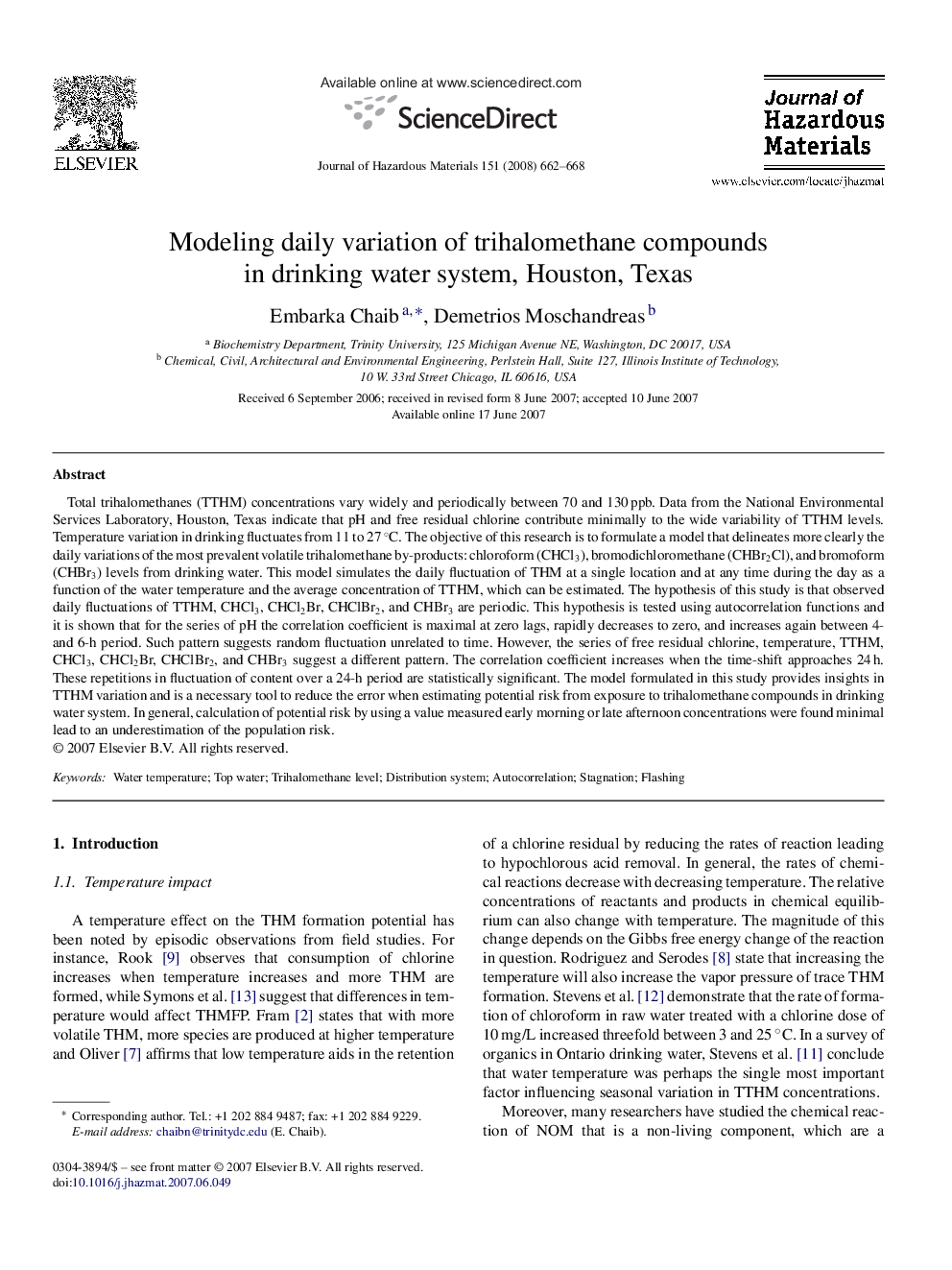| کد مقاله | کد نشریه | سال انتشار | مقاله انگلیسی | نسخه تمام متن |
|---|---|---|---|---|
| 583490 | 1453176 | 2008 | 7 صفحه PDF | دانلود رایگان |
عنوان انگلیسی مقاله ISI
Modeling daily variation of trihalomethane compounds in drinking water system, Houston, Texas
دانلود مقاله + سفارش ترجمه
دانلود مقاله ISI انگلیسی
رایگان برای ایرانیان
کلمات کلیدی
موضوعات مرتبط
مهندسی و علوم پایه
مهندسی شیمی
بهداشت و امنیت شیمی
پیش نمایش صفحه اول مقاله

چکیده انگلیسی
Total trihalomethanes (TTHM) concentrations vary widely and periodically between 70 and 130 ppb. Data from the National Environmental Services Laboratory, Houston, Texas indicate that pH and free residual chlorine contribute minimally to the wide variability of TTHM levels. Temperature variation in drinking fluctuates from 11 to 27 °C. The objective of this research is to formulate a model that delineates more clearly the daily variations of the most prevalent volatile trihalomethane by-products: chloroform (CHCl3), bromodichloromethane (CHBr2Cl), and bromoform (CHBr3) levels from drinking water. This model simulates the daily fluctuation of THM at a single location and at any time during the day as a function of the water temperature and the average concentration of TTHM, which can be estimated. The hypothesis of this study is that observed daily fluctuations of TTHM, CHCl3, CHCl2Br, CHClBr2, and CHBr3 are periodic. This hypothesis is tested using autocorrelation functions and it is shown that for the series of pH the correlation coefficient is maximal at zero lags, rapidly decreases to zero, and increases again between 4- and 6-h period. Such pattern suggests random fluctuation unrelated to time. However, the series of free residual chlorine, temperature, TTHM, CHCl3, CHCl2Br, CHClBr2, and CHBr3 suggest a different pattern. The correlation coefficient increases when the time-shift approaches 24 h. These repetitions in fluctuation of content over a 24-h period are statistically significant. The model formulated in this study provides insights in TTHM variation and is a necessary tool to reduce the error when estimating potential risk from exposure to trihalomethane compounds in drinking water system. In general, calculation of potential risk by using a value measured early morning or late afternoon concentrations were found minimal lead to an underestimation of the population risk.
ناشر
Database: Elsevier - ScienceDirect (ساینس دایرکت)
Journal: Journal of Hazardous Materials - Volume 151, Issues 2â3, 1 March 2008, Pages 662-668
Journal: Journal of Hazardous Materials - Volume 151, Issues 2â3, 1 March 2008, Pages 662-668
نویسندگان
Embarka Chaib, Demetrios Moschandreas,